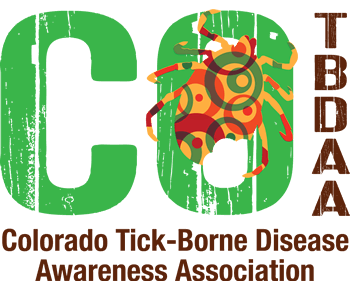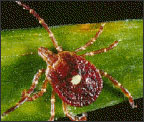
Alpha-gal Syndrome
Alpha-gal Syndrome
Tick bites can cause more than infections!
In recent years, cases of Alpha-gal Syndrome (Galactose-alpha-1,3-galactose) have been diagnosed in increasing numbers of people with tick bites. Alpha-gal Syndrome has many names and is also known as AGS, alpha-gal allergy, red meat allergy, mammalian meat allergy, and mammalian products allergy.
Alpha-gal (galactose-α-1,3-galactose) is a sugar molecule found in most mammals (except in humans and Old World apes). When a tick bites a person it transfers this sugar into the bloodstream. The body then produces antibodies to fight the sugar.
- Alpha-gal is found in “red meat” such as beef, lamb, pork, venison, rabbit, squirrel. It is not found in fish, reptiles, or birds.
- Alpha-gal can be found in products that contain mammal ingredients (including some medications, cosmetics, vaccines, gelatin, and milk products).
The allergy may take several weeks or longer to develop after a tick bite and may become more severe with additional tick bite exposures. When a person eats meat or meat products, their immune system responds to the alpha-gal in the meat and they suffer an allergic reaction.
Since the reaction to eating red meat may be delayed by several hours, the proper diagnosis is often missed or misdiagnosed. The allergic reaction can be severe and life-threatening, causing anaphylaxis in some people. It’s not yet known if the red meat allergy is permanent.
Preventing tick bites is critical to avoiding this condition!
In the U.S., the Lone star tick (Amblyomma americanum) is most commonly associated with Alpha-gal Syndrome (alpha-gal allergy). Alpha-gal has been isolated in the saliva of the Blacklegged tick (Ixodes scapularis). Alpha-gal has also been isolated in the saliva of Asian longhorned ticks found in Japan. To date, no known association exists between Asian longhorned ticks and Alpha-gal Syndrome in the U.S. Bites from other types of ticks are associated with Alpha-gal Syndrome in Australia, Asia, and Europe.
The Health and Human Services (HHS) Tick-Borne Disease Working Group has made this topic a priority in their 2020 report to Congress.
References
Alpha-gal Information-Foods to Avoid
Symptoms of Alpha-gal
- Symptoms of Alpha-gal Syndrome commonly appear between zero and ten hours after exposure from eating meat (e.g., beef, lamb, pork, venison, and rabbit) or exposure to products containing alpha-gal (such as medications, cosmetics, vaccines, gelatin, and milk products). Exposure routes include eating, skin contact, or inhalation.
- Symptoms are variable and wide-ranging. Examples include:
- hives (urticaria);
- anaphylaxis (a potentially deadly reaction that restricts breathing);
- angioedema (similar to hives, but at deeper layers of the skin);
- gastrointestinal (e.g. diarrhea, acid reflux, upset stomach, vomiting)
- rapid decrease in blood pressure;
- swelling of the lips, face, tongue and throat, or other body parts; and
- atypical chest symptoms.
- Symptoms may not occur after every exposure and can vary from person to person.
- Symptoms may not get progressively “worse” over time. A person can have an anaphylactic reaction one time, and the next time: diarrhea, itching, or a burning sensation.







